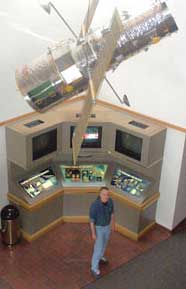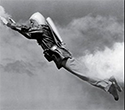The Photography Geek Revisits An Old Hostility
I’ve been a camera kid ever since elementary school, but it wasn’t until I got into high school and a friend showed me how to develop film that I really took off with it. This was 1970-72 and back then the camera at the top of the pecking order was the Nikon F. It was legendary among professionals and dedicated amateurs. It was also very expensive, even in its most basic form way beyond my reach. I knew it to be the gold standard of 35mm SLRs. But the more I studied it, the less impressed I became.
Truth be told, a good part of why would be the insufferably egotistical classmate whose parents have given him a Nikon F. I mentioned him briefly in A Coming Out Story…

(The names throughout the story have been changed to protect the innocent…and the not so innocent…)
I’m sure I had the insufferable streak in me too. It comes with being a teenager. But I also had the geek gene, and by my junior year I’d researched all the 35mm SLRs on the market, examined as many as I could at various camera stores, and I had issues with the design of the Nikon F. It struck me as a very clunky piece of equipment, and especially it’s big bulky TTL (Through The Lens) metering prism that seemed a ridiculous kludge. And why the hell did you have to take the camera apart (okay…take the back off…) just to change film? WTF?? But the F was the gold standard of professional photographer equipment and the only thing I could figure was that it, like the Kirby Vacuum, had a lot of attachments so it could be everything to everyone.
When Canon came out with the F1 and its system in 1971 I was overjoyed. Here was a camera that got everything exactly right. I flipped burgers all summer long to get one.
Time passes…the universe expands…I began making good enough money I could afford all the Canon FD lenses I’d ever wanted, and there were many good ones on the second hand market. I bought a second generation F1 body, and then the third and final one. But a chance encounter with a Nikon F2 at a camera store in Kansas gave me some second thoughts about Nikons, and cameras in general. There is something about these older, all mechanical devices that reaches into you, like a handcrafted musical instrument, or a fine automobile with a stick. Something you miss in a lot of digital equipment today. But maybe that’s just the kid I once was, remembering how it used to be, talking.
So I bought that F2, and later believe it or not, a Nikon Ftn. Professional black for extra coolness points. My Canon F1s are still the favorites (although the Leica M3 a friend sold me is threatening to knock them off that pedestal), but I take the Nikons out and about whenever a certain frame of mind occupies me. All I can tell you is it’s something about the mechanical feel of the cameras.
And it interested me enough to dive a bit deeper into the history of these cameras over the years. And because of that I understand a little better about why the Nikon F is as big of a kludge design as it is. And yes…it is.
Let me say this in advance: The basic Nikon F body is actually as solid and durable as its reputation says. This thing will go to hell and back for you. The meter prism though, is another story. I seem to have had good luck with both of mine as they are still fully functional (just don’t get me started on that screwy center weighted pattern). But I’ve bought the basic prism finders for both of those cameras, just in case. And while yes it is every bit as solid and robust as it’s reputation…it’s still a kludge. A kludge can work perfectly and reliably and still be a kludge.
Why do you have to take the back off the Nikon F to change film? Why is the shutter release in such an awkward position? Because they basically scaled up their rangerfinder to make their first SLR and that’s how the rangefinder was built. I’ll give them that they got a lot right…the instant return mirror, titanium shutter (which the rangefinders had since 1958), user replaceable focusing screens and viewfinders. But it’s such a mess of good stuff and why the hell did you do that.
The metering prisms especially. There were three generations for the F body, and the first of them is like a showcase of why I had issues with the reputation of Nikons back in the day.
Here it is…

When I first beheld this, I gave it more credit than it’s due. I figured, oh, the engineers weren’t quite all in on TTL metering so they put the meter on the outside facing forward. Okay…fine…lots of makers did that, usually by adding a clip on meter to the top of the camera. In fact, Nikon did that before they came out with this. But why the hell is that prism so goddamned large. Okay…they had to work out the mechanics of getting the shutter speed and aperture in the viewfinder….right? No. You saw the aperture in a window above the eyepiece. Dig it…you want to know your aperture, you take your eye off the viewfinder and look at the little window above it. Or…you know…you could just look at the lens. But it gets Better!
Here…let me show you the on/off switch…

Yes…that’s right. They call this finder the “flag” finder for a reason. The on/off switch is just a cover over the metering cell. Since it used a cds cell (Cadmium Sulphide) which changes resistance to the current based on how much light is hitting it, you can effectively turn off the meter by covering over the cds cell. With no light hitting it the cell is at 100 percent resistance. Flip the “flag” out of the way and the cell gets light and current flows through the meter. Voilà! An on/off switch! This is truly engineering brilliance.
Let it be said that this effect has probably saved a lot of light meter batteries from an early death. You put the lens cap on and even if you’ve forgotten to turn off the meter, it’s effectively off anyway.
Notice how you set the max aperture of the lens by way of fiddling with the film speed dial. That was a perennial problem for the Nikon photomic viewfinders all the way to the F2a. To do stop down metering all you need to do is turn the meter on and stop the lens down to the taking aperture and read what the meter is telling you. But you really can’t focus with the lens stopped down. So there’s Open Aperture Metering, which is you take a reading on what’s coming through the lens at it’s max aperture. But then the meter needs to know what the lens maximum aperture is. An f1.4 lens is going to be sending more light to the meter than an f2.8 lens.
So on this viewfinder you match the lens aperture to the film speed. On the best of the F photomics, the FTN, you set the max aperture of the lens by doing what they used to call the Nikon shuffle: mount the lens then twist the aperture ring all the way to high, then all the way to low. Forget to do that and the meter will give you the wrong exposure because it does not have the correct max aperture for that lens (when you mount the lens the meter defaults to f5.6 and that’s what it’ll think the lens max is until you fiddle with the aperture ring).
It wasn’t until Nikon came out with the photomic F2A that they figured out how to do open aperture TTL metering with automatic registration of the lens aperture. But you need the “ai” lenses for that to work. Give them this, they figured out how to do an on/off switch much sooner.
Okay…yes the camera bodies are practically bombproof. You put a standard plain viewfinder prism on either the F or the F2 and you have a camera that will get you through almost anything. And this is why the standard prisms are becoming expensive and hard to find in good condition. Bring along an F2 with a standard prism, and a good handheld light meter you are ready for almost anything.
That said, if I had to do some work in a disaster zone I would be bringing one or more of my Canon F1s. They’ll do the job. Or…that darn Leica! I was never much fond of rangefinders until I got my hands on that camera. I read some poor soul who had to sell his M3 say that it was a God level camera and he was right. I felt so sorry for him.
The Nikons have a distinctive mechanical feel that suits me. Sometimes. Given how much I used to badmouth them back in the day I know a bunch of classmates that would laugh themselves silly if they ever saw me with one. Okay…fine. You live and learn. They’re good cameras. Mostly. Somewhat. Just don’t get me started on how legendary they are. You’ll get an earful.
Okay…so you just did…







































